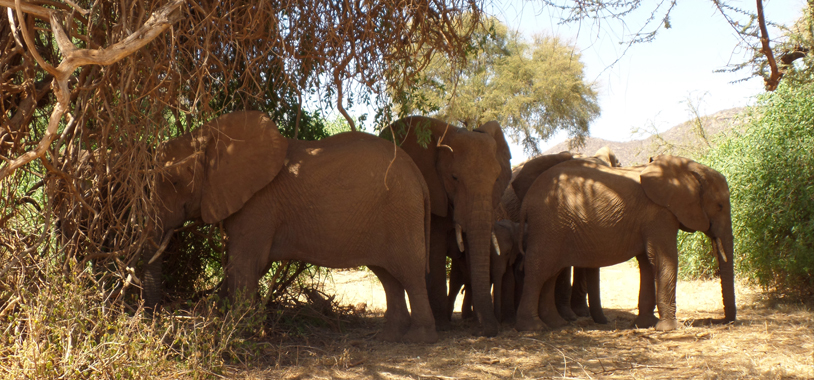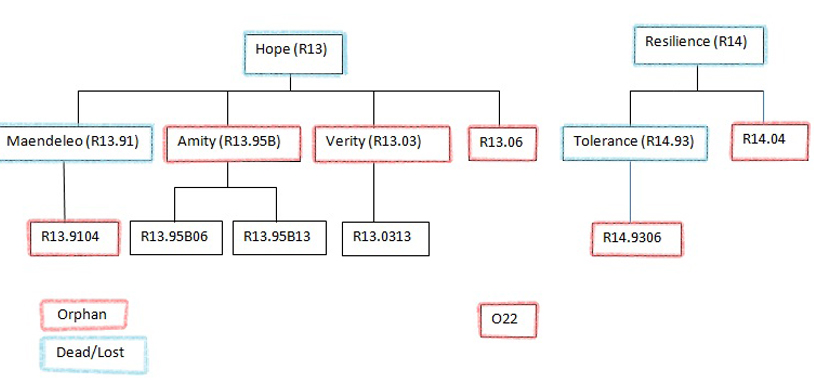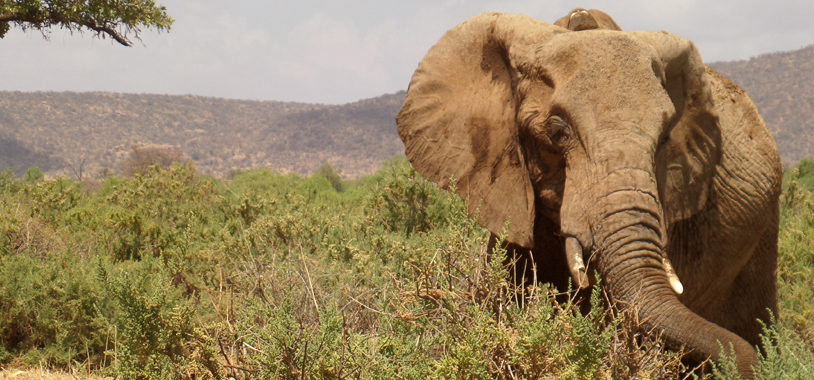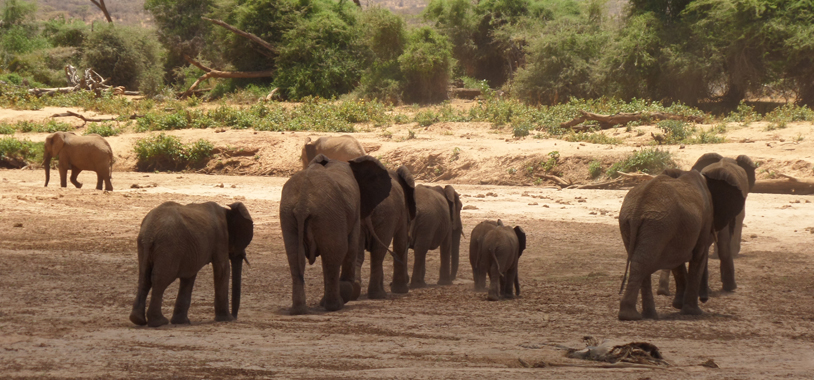The practice of identifying individual elephants from their unique (if not sometimes extremely subtle) ear patterns is done to perfection by the long term monitoring team at Save The Elephants research camp in Samburu; but do not be fooled – it is no easy task. The resident researchers know the many elephants that frequent Samburu National Reserve like old friends, even from vast distances, and so starting as an intern in camp is both incredible and daunting.
However, when I arrived to the spectacle that is Samburu’s many elephant families, I was up to the task. After 5 days of struggling to implement a system to differentiate the elephants we were coming across, I was fortunate enough to spend nearly 2 hours with the Virutes family as Shifra recorded behavioral data. I got to know their ear patterns as they lazily shaded themselves from the midday sun, and it felt as though I finally could get to know this family on an individual basis.

The Virtues resting. From left to right: Verity (R13.03), Amity (R13.95B) and Amity’s calves (R13.95B13), (R13.95B06)
When you get past the bulk that is an elephant family, their differences are striking, and extremely endearing. R13.95B06 and her little brother (R13.95B13) both have matching kinks in their tail – making them fall behind them like oversized corkscrews. R13.06 has tusks that both lean to her left, and a tail with no hair whatsoever. As a result, this little close-knit family has really captured my heart and has become my favourite family to spend time with in the bush.
This family is not just incredibly special to myself, but has a story behind it that demonstrates the amazing bonds elephants share and their ability to remain a close family group in the face of even the most horrific circumstances.
Prior to 2011, the virtues family had 4 more breeding females; Hope (R13), Resilience (R14), Maendeleo (R13.91) and Tolerance (R14.93). Hope and Resilience were the oldest females, collectively giving birth to 6 calves in their lives and thus forming the virtues family I have come to know (see family tree below).
Tragically, they could not escape the avarice of human kind and both Hope and Resilience were poached within just 2 months of one another. The family had lost 2 breeding females, and went on to suffer the death of Hopes daughter, Maendeleo, and the loss of Resiliences daughter, Tolerance, within just a few months. By July 2011, the family had been decimated by death that left all but one elephant an orphan. This turbulent and devastating time robbed the family of their older females – leaving the immensely demanding role of Matriach fall on a young Amitys shoulders. At just 16 years old, with a 5 year old calf in tow, Amity took the lead of her newly broken family.
To know the plight that this family has faced, yet be able to witness the touching and beautiful bonds they share is astonishing. Whether they are resting or feeding, they are never far from one another and interact with affectionate trunk touches and body rubs, as well as a reassuring rumble or two. Amity has succeeded in leading her family, allowing them to remain in each other’s care. Since the heartbreak that befell them, two more calves have been born to the family – Amity has a second baby to protect and Verity gave birth to her first calf; both in 2013. The whole family is doing incredibly well, and go on to live normal elephant lives within Samburu National Reserve.
The virtues family was destroyed by man and its greed, but has remained a family unit. The adaptability and resilience of this family fills me with a sense of great awe whenever I am with them; they may be orphans leading orphans, but they are the strongest family I have ever had the pleasure of knowing.




